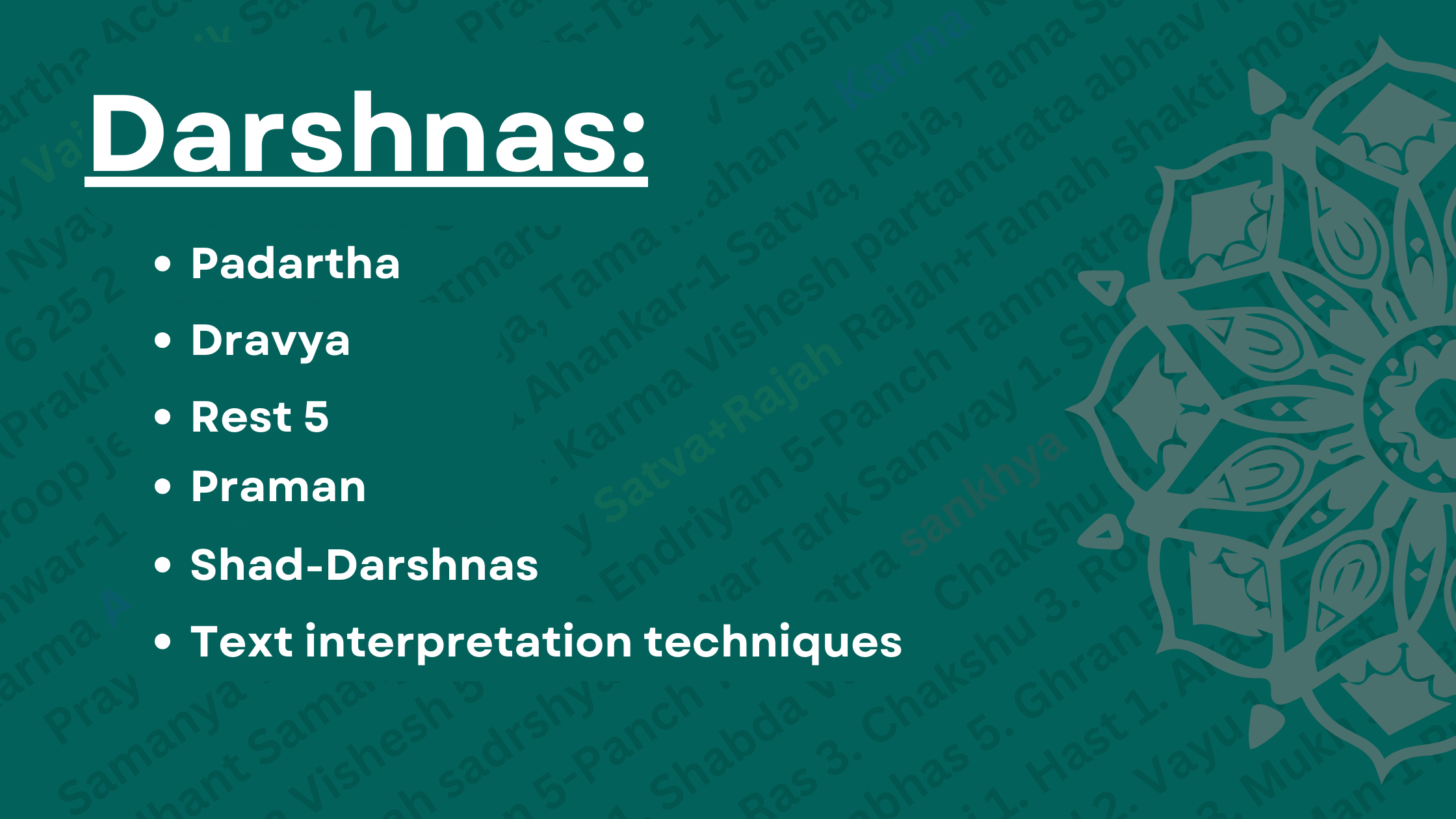Darshnas-Ayurved Philosophy

About Course
The term “Padartha” is formed by merging two words: “Pad” and “Artha,” where “Pad” signifies a linguistic unit in Sanskrit grammar that conveys meaning and can function independently. According to Panini’s grammar, “Pad” can be categorized into two primary types:
- “Subanta”: These are nouns or names that remain unchanged and do not undergo inflection. They typically denote people, objects, places, and concepts. For instance, “Rajesh” and “Mahesh” are examples of Subanta words.
- “Tidanta”: These are verbs that undergo inflection based on tense, gender, number, and person. Tidanta words denote actions or events. For instance, “Dhawti” (jumps) and “khadati” (eats) are Tidanta words.
Therefore, the essence of “Pad” lies in its representation of both entity and action.
Course Content
Student Ratings & Reviews

No Review Yet
